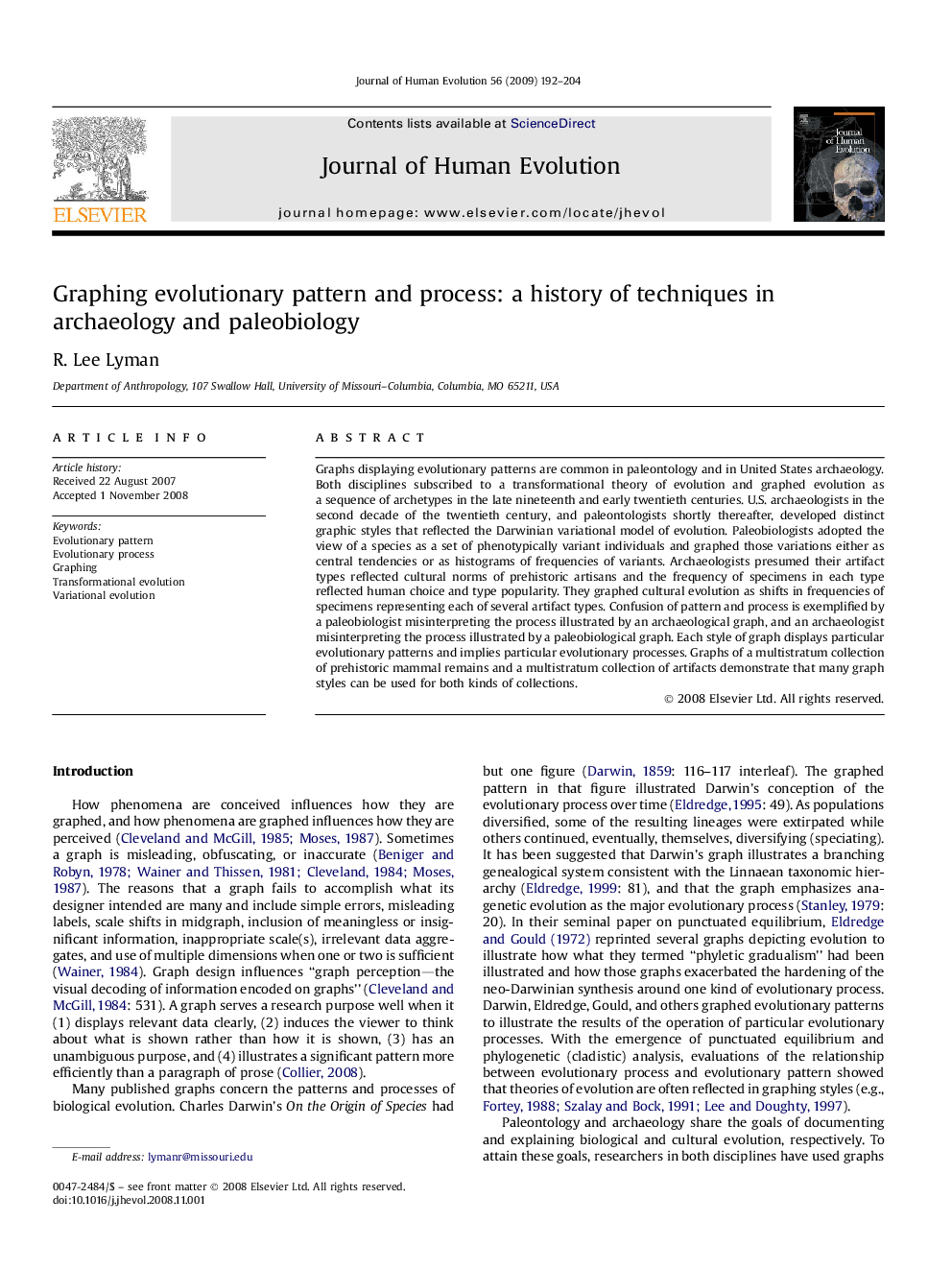| Article ID | Journal | Published Year | Pages | File Type |
|---|---|---|---|---|
| 4557225 | Journal of Human Evolution | 2009 | 13 Pages |
Graphs displaying evolutionary patterns are common in paleontology and in United States archaeology. Both disciplines subscribed to a transformational theory of evolution and graphed evolution as a sequence of archetypes in the late nineteenth and early twentieth centuries. U.S. archaeologists in the second decade of the twentieth century, and paleontologists shortly thereafter, developed distinct graphic styles that reflected the Darwinian variational model of evolution. Paleobiologists adopted the view of a species as a set of phenotypically variant individuals and graphed those variations either as central tendencies or as histograms of frequencies of variants. Archaeologists presumed their artifact types reflected cultural norms of prehistoric artisans and the frequency of specimens in each type reflected human choice and type popularity. They graphed cultural evolution as shifts in frequencies of specimens representing each of several artifact types. Confusion of pattern and process is exemplified by a paleobiologist misinterpreting the process illustrated by an archaeological graph, and an archaeologist misinterpreting the process illustrated by a paleobiological graph. Each style of graph displays particular evolutionary patterns and implies particular evolutionary processes. Graphs of a multistratum collection of prehistoric mammal remains and a multistratum collection of artifacts demonstrate that many graph styles can be used for both kinds of collections.
